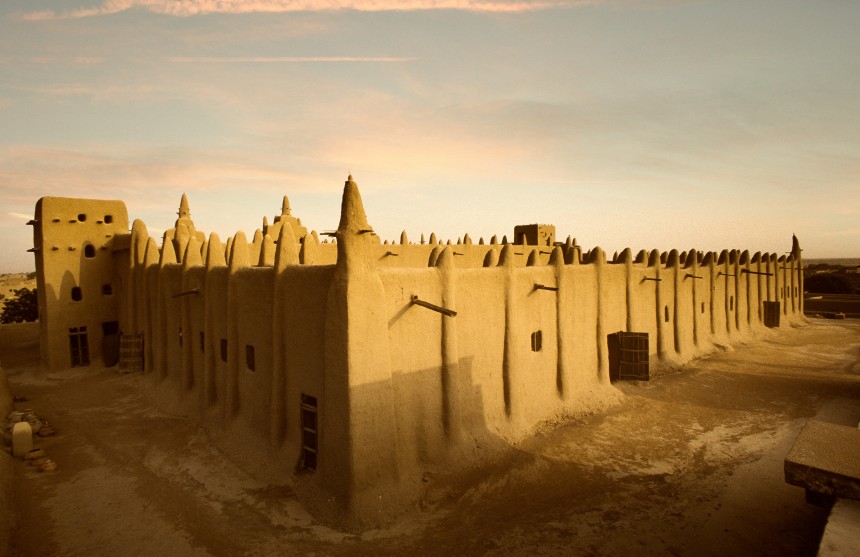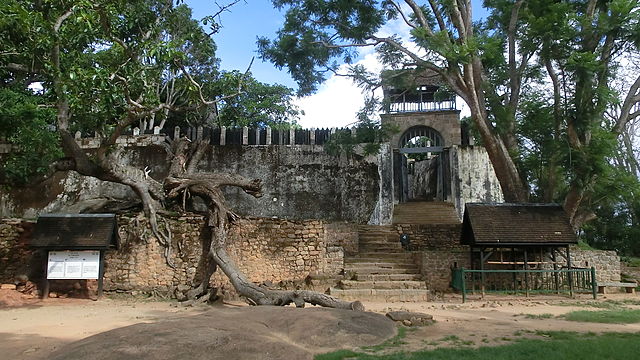| 6 mins read
“If you have ever seen magic, it would have been in Africa.”
John Hemingway
Known for its incredible national parks teeming with wildlife, Africa is a dream destination for nature lovers and adventure seekers. However, an unpopular fact is there's much more to Africa than just its magnificent parks. Boasting a rich cultural heritage, vibrant cities, breathtaking landscapes, and remarkable historical sites, Africa offers something for everyone.
In this blog post, we will explore 10 must-see places in Africa that will give you a taste of Africa’s true essence beyond the national parks.
The Great Mosque of Djenne (Mali)
The Great Mosque of Djenne in Mali is a must-visit for anyone seeking cultural enrichment and architectural wonder. Designated as a UNESCO World Heritage Site, it is the largest mud-brick building in the world, showcasing the unique Sudanese-Sahelian architectural style. Visit this iconic landmark on a Monday when the bustling weekly market occurs in the mosque's courtyard, offering a unique opportunity to experience local life.
Interesting fact!
Every year, during the annual Crepissage festival in the dry season, the community comes together to re-plaster the structure with mud. So the structure is given a new touch every year! This extraordinary site is a once-in-a-lifetime experience.
The Rock-Hewn Churches of Tigray, Ethiopia
Home to over 100 rock-hewn churches dating from the 4th to the 15th century, these hidden gems are a testament to the region's early Christian history. Attributed to King Lalibela, these structures were constructed as a part of the king's idea to create a ‘New Jerusalem’ after Muslim conquests halted Christian pilgrimages to the holy Land.
On your visit, embrace the adventure by climbing to the more remote churches like Abuna Yemata Guh or Debre Tsion, which offer breathtaking views and a true sense of discovery in this off-the-beaten-path destination. Moreover, to make the most of your visit, consider hiring a knowledgeable local guide who can lead you to the most impressive churches and provide valuable insights into their history.
The Makola Market, Accra, Ghana
To experience a typical African life, you must visit the Makola Market, located in the heart of Accra. From textiles, clothing, and traditional jewellery to spices, produce, and local street food, Makola has it all. The market offers the best culinary experience by serving a variety of mouth-watering Ghanaian dishes such as jollof rice, waakye, kelewele, and banku with tilapia.
Interesting fact!
The market is predominantly run by women, known as "market queens." These entrepreneurial women significantly influence the market's operation, and their expertise and knowledge of local commerce have been passed down through generations.
The Osun-Osogbo Sacred Grove, Nigeria
Recognised as a National Monument of Nigeria and a UNESCO Heritage Site, the Osun-Osogbo Sacred Grove is a dense forest on the outskirts of Osogbo, Nigeria. Dedicated to the Yoruba goddess Osun, the grove contains shrines, sculptures, and artwork celebrating Yoruba cultural heritage.
Tip: Visit during the annual Osun-Osogbo Festival, when thousands of devotees gather to pay homage to the goddess and experience a vibrant display of music, dance, and rituals.
Sidi Bou Said, Tunisia
A picturesque village perched atop a cliff overlooking the Mediterranean Sea, Sidi Bou Said is known for its blue-and-white colour scheme and Andalusian architecture. The village is home to the Dar el-Annabi, a traditional 18th-century house turned museum which showcases the history and culture of the region. The village also boasts a range of art galleries and workshops, where visitors can discover local artists' works and even take part in art classes or pottery workshops.
While wandering with a local Tunisian guide through Sidi Bou Said's maze of cobbled streets, you'll find numerous cafés and restaurants offering traditional Tunisian cuisine and mint tea, perfect for unwinding while enjoying panoramic sea views.
The Valley of the Kings, Luxor, Egypt
Nestled in the hills on the west bank of the Nile River near Luxor, the Valley of the Kings is the final resting place for many of Egypt's most famous pharaohs. These tombs were designed to protect the mummified bodies and treasures of the deceased from tomb robbers and ensure a successful journey to the afterlife. Today, the necropolis contains over 60 tombs, including that of Tutankhamun, with elaborate wall paintings and intricate carvings that have withstood the test of time.
The Fes Tanneries, Fes, Morocco
Dating back to the 11th century, the Fes tanneries employ traditional methods to produce exquisite leather goods. The tanneries provide insight into ancient techniques and natural materials used in leather production, including organic dyes and pigeon droppings. You can marvel at the intricate process from the terraced viewing platforms, which offer panoramic views of the vibrant dye-filled vats and skilled craftsmen at work.
Witness the labour-intensive process of turning raw hides into colourful, high-quality leather products while appreciating the unique geometric patterns of the dye-filled vats. Don't forget to visit the surrounding leather shops to pick up a souvenir to remember this unique experience.
Goree Island, Senegal
Recognized for its historical significance, Gorée Island was designated a UNESCO World Heritage Site in 1978. The island is a testament to the struggle against slavery and serves as a symbol of human rights, commemorating the millions of enslaved Africans who passed through its shores during the transatlantic slave trade.
Apart from its historical significance, the island offers charming colonial architecture, narrow streets, and a thriving artist community.
The Royal Palaces of Abomey, Benin
A group of twelve palaces, the Royal Palaces of Abomey, were built by the Kings of Dahomey between the 17th and 19th centuries. The Royal Palaces of Abomey offer a unique glimpse into the history of the Dahomey Kingdom, where these served as the center of political and cultural life in the kingdom and are now recognised as a UNESCO World Heritage Site.
During your visit, you can explore the various palaces and a museum with displays of artifacts and cultural objects, including ceremonial masks, textiles, and royal thrones.
Royal Hill of Ambohimanga, Madagascar
The Royal Hill of Ambohimanga, a UNESCO World Heritage Site, is an important cultural and historical destination in Madagascar. The site served as a royal residence for the Merina dynasty for centuries, and the kings and queens who ruled from Ambohimanga helped shape the island's history. Ambohimanga is also home to several sacred sites, including ancestral burial grounds and a sacred spring, which was believed to have healing properties.
You can explore the well-preserved royal palace, wander through the tranquil forest, and discover the fascinating history of Madagascar's royalty.



